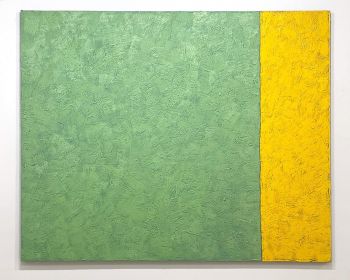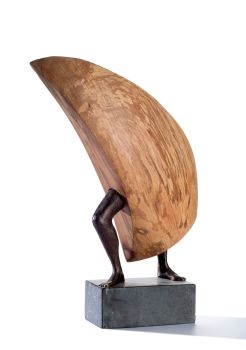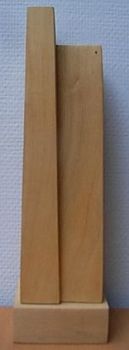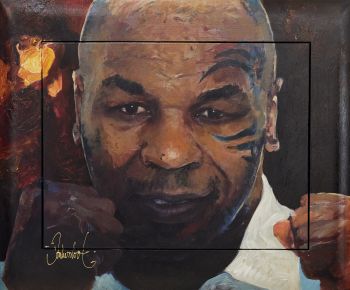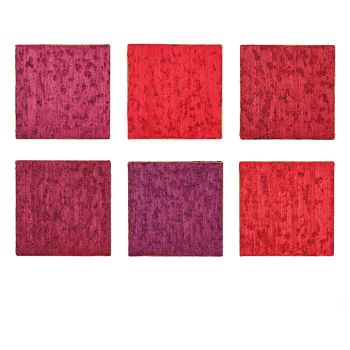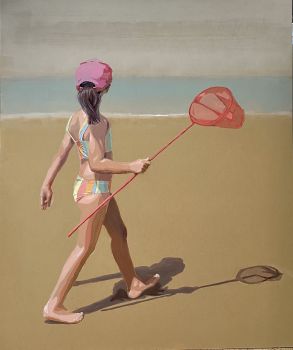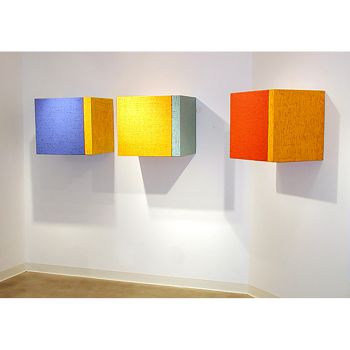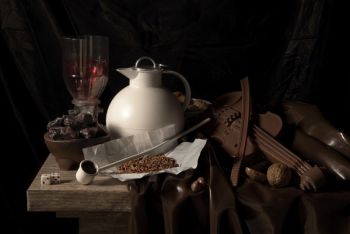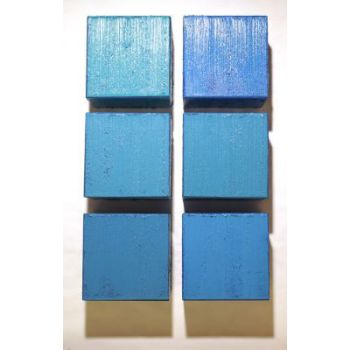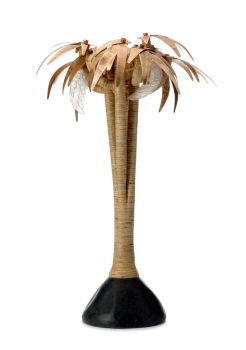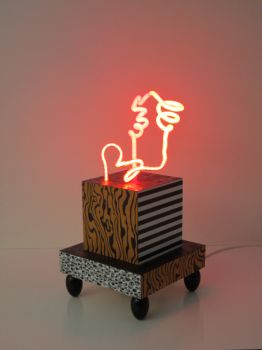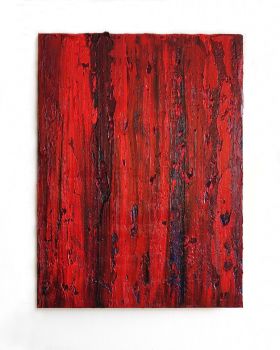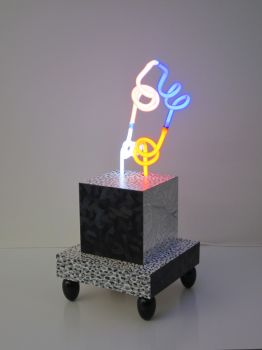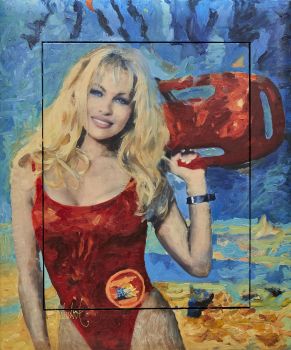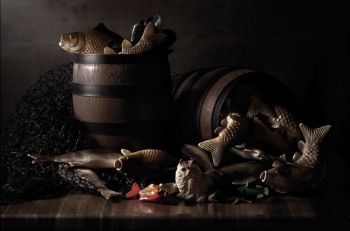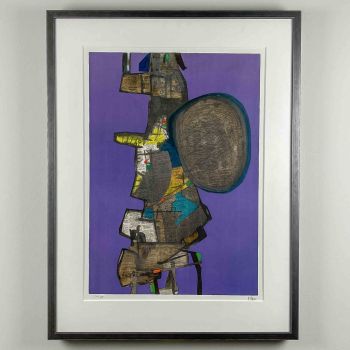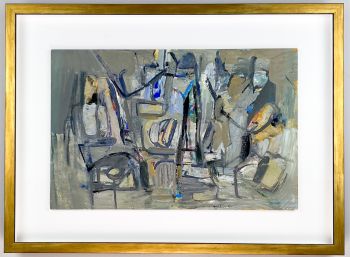A staved teakwood “Congo” icebucket – Dansk Designs, circa 1965 1960 - 1969
Jens Harald Quistgaard
HolzTeakholz
40 cm
ConditionVery good
€ 675
Van Kerkhoff Art
- Über KunstwerkA staved teakwood “Congo” lidded icebucket with a black plastic inner liner. Designed by Jens Quistgaard in 1955 and produced for Dansk Designs probably in the late 1950’s or early 1960’s.
These icebuckets were made in three different size ranges, this being a middle sized example. These objects were made with great craftsmanship.
Strips of solid teakwood (staves) were joined together in a traditional way to form the final shape. The craftsmanship originates from the tubing of buckets and barrels and has been practised in Scandinavia since the middle ages.
The ice bucket is branded underneath the base: “four Ducks mark” – which identifies the bucket as an early production piece – Dansk Designs Denmark – JHQ (Jens Harald Quistgaard) and ©.
About Jens Harald Quistgaard
Jens Harald Quistgaard (Copenhagen 1919 – Vordingborg 2008) was a Danish wood-, metal- and glassware designer and sculptor, known principally for his work for the American company Dansk Designs, where he was chief designer from 1954 until 1983. Jens Harald Quistgaard grew up in an artistic family in Copenhagen. His father, Harald Quistgaard, tought him sculpting at a young age. He was educated as a drawer and silversmith at the technical school in Copenhagen. His apprenticeship he served at Georg Jensen Sølvsmidie.
After World War II Quistgaard set up his own design studio in Copenhagen. His breakthrough as an designer came in 1953–54, where he fashioned the cutlery set Fjord, the first cutlery set that combined stainless steel with handles of teak.
In 1954 was awarded the gold medal at the Triennale in Milan for a saucepan design. For two more reasons 1954 became a very important year for Quistgaard. He received the prestigious Lunning Price – informally called the “Nobel price for design” – and he started to work together with the American businessman Ted Nierenberg.
Together they founded the American company Dansk Designs with Quistgaard as chief designer. His designs were an immediate success in the USA and his designs were synonymous with modern living and Scandinavian style, consisting of clean lines, sculptural form and natural materials.
From the 1960’s onward his success in The united States was followed by success in Europe and Japan. Dansk Designs started their own shop in Copenhagen, in London and in Stockholm, and Quistgaard’s designs were exhibited and sold in Tokyo, Berlin, Paris, Zürich, Melbourne, Johannesburg and many other major cities.
Quistgaard remained chief designer for Dansk Designs until the 1980’s. In 1983 he moved to Rome and in 1993 he returned to Denmark.
His work is represented in many museums all over the world, among others: The Louvre, Paris; Designmuseum Danmark, Copenhagen; The British Museum, London; The MoMa, New York City and the National Museum, Stockholm.
Marked
Branded underneath the base:
"Four Ducks" Mark – Dansk Designs Denmark – JHQ (Jens Harald Quistgaard) and ©
Execution
made for Dansk Designs in Denmark, circa 1965
Condition
Good original condition, some minor scratches, stains and dents. Wear consistent of age and use.
Literature
Mel Byars – The Design Encyclopedia, p. 605-606
Dimensions
Height 40 cm - Über Künstler
Jens Harald Quistgaard (23. April 1919 – 4. Januar 2008) war ein dänischer Designer, der vor allem für seine Kreationen für Dansk bekannt war, wo er von Mitte der 1950er bis in die 1980er Jahre als Chefdesigner arbeitete. Im Laufe seiner Karriere entwarf Quistgaard mehr als 4000 Objekte und leistete damit einen wichtigen Beitrag zum modernen Design.
Quistgaard wurde am 23. April 1919 in Kopenhagen geboren und wuchs in einer Künstlerfamilie auf, in der sein Vater, Harald Quistgaard (1887-1979), Bildhauer und seine Mutter Malerin war. Im Alter von vierzehn Jahren begann Jens Harald Quistgaard mit der Herstellung von Schmuck und Messern zu experimentieren. Nach seiner Ausbildung an der technischen Schule absolvierte er eine Lehre bei renommierten Handwerkern wie Georg Jensen und Just Anderson.
Während des Zweiten Weltkriegs war Quistgaard im dänischen Widerstand aktiv. Nach dem Krieg wurden seine Entwürfe auf verschiedenen Ausstellungen in Europa und den Vereinigten Staaten ausgestellt.
Ein Wendepunkt in seiner Karriere kam mit der Kreation des Bestecksets „Fjord“ im Jahr 1953, bei dem Quistgaard Teakholz mit Edelstahl kombinierte. Der Entwurf erregte die Aufmerksamkeit des amerikanischen Unternehmers Ted Nierenberg, der sich mit dem Vorschlag an Quistgaard wandte, das Besteckset in großem Maßstab herzustellen. So entstand 1954 Dansk International Designs mit der Ernennung von Quistgaard zum Chefdesigner. Das Fjord-Besteckset wurde 1956 in amerikanischen Geschäften eingeführt und entwickelte sich schnell zu einem großen Erfolg.
Neben Besteck entwarf Quistgaard für Dansk auch eine umfangreiche Kollektion an Pfeffermühlen, Salatschüsseln und Schneidebrettern. Er war bekannt für die Verwendung von Holz in seinen Entwürfen, insbesondere Teakholz, aber auch exotischeren Hölzern wie Wenge, Cocobolo und Palisander.
Quistgaard erhielt mehrere prestigeträchtige Auszeichnungen für seine innovativen Designs, darunter Gold- und Silbermedaillen auf der Mailänder Triennale 1954 und den Lunning-Preis. 1958 wurde ihm der Neimann-Marcus-Preis verliehen. Quistgaard arbeitete bis in die 1980er Jahre bei Dansk, wo er kontinuierlich innovative und zeitlose Designs entwarf.
Das Vermächtnis von Jens Harald Quistgaard lebt in der Welt des Designs weiter, wo seine zeitlosen und funktionalen Kreationen noch immer von Enthusiasten auf der ganzen Welt geschätzt werden. Sein Einfluss auf die dänische und internationale Design-Community wird für immer in Erinnerung bleiben.
Sind Sie daran interessiert, dieses Kunstwerk zu kaufen?
Artwork details
Related artworks
- 1 - 4 / 24
Unbekannter Künstler
Japanese transition-style lacquer coffer 1640 - 1650
Preis auf AnfrageZebregs & Röell - Fine Art - Antiques
 Kuratiert von
Kuratiert vonDanny Bree
1 - 4 / 24Peter Paul Rubens (circle of)
Portrait of a man dressed up as an oriental man1620 - 1630
Preis auf AnfrageGallerease Selected
Unbekannter Künstler
The Stamford Raffles Secretaires.1800 - 1813
Preis auf AnfrageZebregs & Röell - Fine Art - Antiques
Unbekannter Künstler
EIN JAPANISCHES MODELL EINES NORIMONO, EINES PALANQUINS1650 - 1700
Preis auf AnfrageZebregs & Röell - Fine Art - Antiques
1 - 4 / 24- 1 - 4 / 12

























































